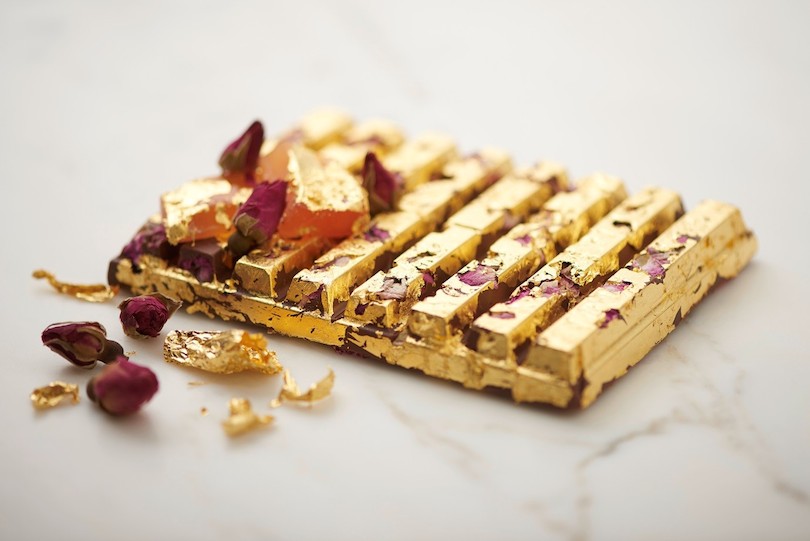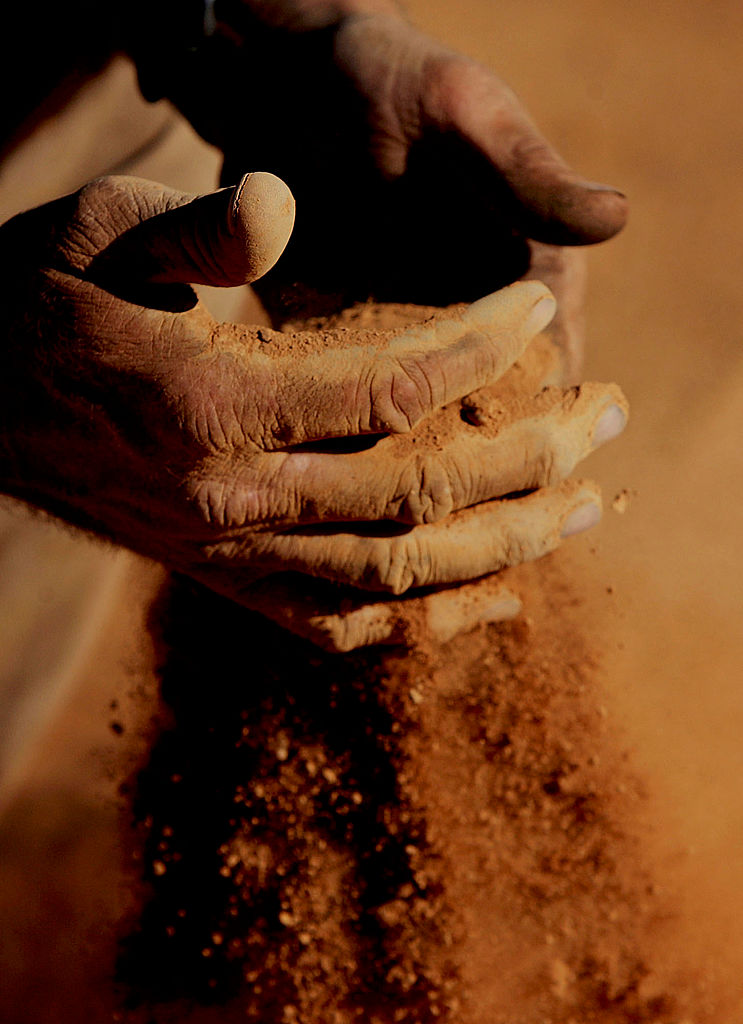While most of us are having a tough time stomaching sky-high food prices, others are splurging on edible gold.

Toronto’s Magic Oven sold four of its gold-covered pizzas this past weekend. Valentine’s Day is always a peak time for the pricey $108 pie (dubbed “Uber Sustenance”), said owner Tony Sabherwal.
“The topping is a 22-carat gold leaf from Italy,” he explained. “It is painstakingly applied to the surface of the pizza after baking.”
“Unfortunately it does not have any taste, but looks great.”
The eatery has sold about 500 of them over the past 15 years. Those with more “modest” tastes can add the metal as a topping to any pizza for $35.
It’s not the only pizzeria to offer the gold standard. Pizza Hut recently jumped on the bandwagon, as well.
A New York restaurant, meanwhile, specializes in a luxury donut that is slathered in Cristal and sprinkled with gold.
There’s also the gold Kit Kat bar, reportedly created by Nestle for this year’s Chinese New Year.
It’s not the only outlandish ingredient people are consuming. Here’s a look at three others.

Get daily National news
1. Bird saliva

Bird’s nest is considered a delicacy in some parts of Asia, with prices apparently soaring more than two-fold in the past year.
It’s been called one of the world’s most expensive foods.
“The country’s expanding middle class hungers for healthy food. Bird’s nest is believed to ward off diseases and feeds a growing demand for luxury products,” Bloomberg News stated in 2013.
“Some Vietnamese say bird’s nest has other powers, including keeping bodies youthful for decades.”
So what is it exactly? “Congealed saliva of Asian swiftlets.” In other words: bird spit, or as it’s often been called — “the Caviar of the East.”
This particular bird reportedly makes its nest from its saliva, which hardens when exposed to air. The nests are then cleaned out and turned into soup.
A single bowl can cost up to $100, according to some estimates.
“It’s one of the most valuable products one can give to those who have everything,” Mai Vu of Vietnam told Bloomberg.
2. Dirt
Back on Canadian soil, at least one Toronto chef took foraging to a new level by having his customers eat dirt. Literally.
Justin Cournoyer used to look for ground that was “rife with pine needles, decaying organic matter and broken-down leaves” to capture the “scents and sensations of an Ontario forest.”
According to Toronto Life, the woodsy flavour would be extracted in a pressure cooker, which also sanitized the dirt and transformed it into what Actinolite Restaurant called “soil butter.”
The ingredient was taken off the menu a couple years ago, but there are other places that still serve up imitation dirt.
That can be a combination of ingredients (like bread, mushrooms, onions, olives and nuts) either blended together, dried or charred. The goal: to have the dish look like dirt.
Umm…we’d rather stick with edible flowers, thank you very much. (The sweet wild hibiscus is becoming more popular in the culinary world. It can be thrown in drinks; or stuffed with goat cheese and served as appetizers at your next dinner party).
3. Bugs
Tempura-battered Tarantula. Cricket shish kebabs. Chocolate-covered ants.
If they weren’t on the menu the last time you ate out, that may soon change as companies and chefs incorporate edible creepy-crawlies as key ingredients in the North American diet.
People in 80 per cent of the world’s countries munch 1,900 different kinds of bugs, according to the United Nations Food and Agricultural Organization (FAO).
Grasshoppers are often found in Niger markets; bees and ants are consumed across China and Japan.
Fun fact: crickets need 12 times less feed than cattle, four times less feed than sheep and half as much feed as pigs and chickens to produce the same amount of protein, according to FAO.
And who couldn’t use a little extra protein?
WATCH: Eating insects – From fringe fad to the future of food
-With files from Andrew Russell, Global News









Comments